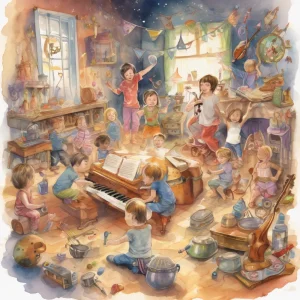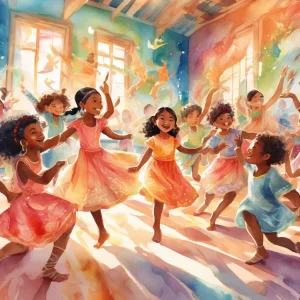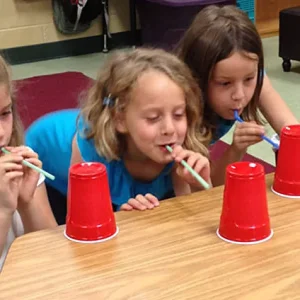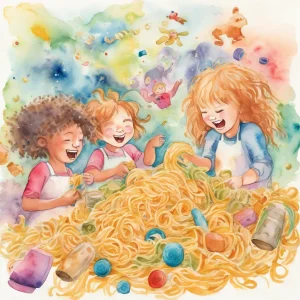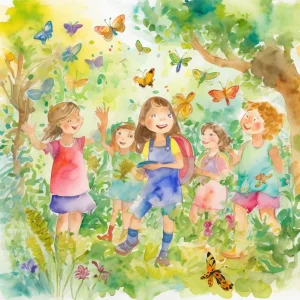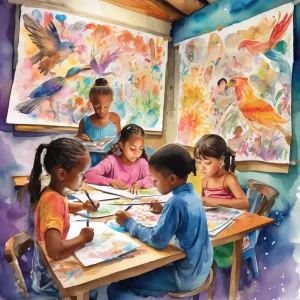Activity
Similar Activities
Musical Journey Through Time and Space - Instrument Exploration
Children’s Age: 3–4 years
Activity Duration: 15 minutes
Embark on a creative musical journey with children aged 36 to 48 months to boost their communication, self-care, and play skills. Use household items as instruments, set up a perfo…
Activity Duration: 15 minutes
Musical Freeze Painting: A Creative Dance Adventure
Children’s Age: 3 years
Activity Duration: 10 – 20 minutes
An engaging activity combining painting with musical freeze dance to promote creativity and play skills.
Activity Duration: 10 – 20 minutes
Whimsical Cup Blow Race for Kids
Children’s Age: 4–6 years
Activity Duration: 5 – 10 minutes
The Cup Race Challenge activity is designed to boost teamwork, fine motor skills, and problem-solving in children. You'll need plastic cups, straws, a table, and masking tape to cr…
Activity Duration: 5 – 10 minutes
Magical Sensory Adventures: Exploring Sensory Bins
Children’s Age: 1.5–2 years
Activity Duration: 10 minutes
Explore the "Exploring Sensory Bins" activity designed for children aged 18 to 24 months to boost play skills through tactile experiences. Gather materials like rice, toys, and sco…
Activity Duration: 10 minutes
Enchanted Nature Scavenger Hunt with Family and Friends
Children’s Age: 6–10 years
Activity Duration: 15 – 30 minutes
Explore the "Family and Friends Nature Scavenger Hunt," a fun-filled activity tailored for children aged 6 to 10. This engaging hunt fosters observation skills, teamwork, and envir…
Activity Duration: 15 – 30 minutes
Whispers of the World: Around the World Virtual Adventure
Children’s Age: 7–9 years
Activity Duration: 20 – 30 minutes
Embark on the "Around the World Virtual Adventure," a captivating and educational journey for children to explore various cultures and innovations globally. Through this activity, …
Activity Duration: 20 – 30 minutes
Whimsical Puzzle Race Challenge: A Playful Adventure
Children’s Age: 4–8 years
Activity Duration: 15 minutes
The Puzzle Race Challenge activity is designed to boost play skills, self-care skills, logical thinking, and problem-solving in children aged 4 to 8. Gather age-appropriate puzzles…
Activity Duration: 15 minutes
Enchanted Tales: Storybook Theater Adventure
Children’s Age: 4–6 years
Activity Duration: 20 – 25 minutes
"Storybook Theater" is a creative activity that enhances children's storytelling abilities using everyday items. Kids can participate by gathering household objects, a beloved stor…
Activity Duration: 20 – 25 minutes
World Wonders: Around the World Ball Game
Children’s Age: 2–2.5 years
Activity Duration: 5 – 10 minutes
Explore the world with the "Around the World Ball Game," perfect for children aged 24 to 30 months. This fun activity enhances gross motor skills and cultural awareness by passing …
Activity Duration: 5 – 10 minutes
Empathy Through Art: Digital Diversity Collage Journeys
Children’s Age: 2–2.5 years
Activity Duration: 10 minutes
The "Digital Diversity Collage" activity is designed to foster empathy, adaptive skills, and cultural awareness in children aged 24 to 30 months using art and creativity. You will …
Activity Duration: 10 minutes
Cultural Collage Creations - Embracing Diversity Through Art
Children’s Age: 6–9 years
Activity Duration: 20 – 30 minutes
Explore different cultures through art with "Cultural Collage Creations," designed for children aged 6 to 9. This activity fosters diversity appreciation, artistic skills, and incl…
Activity Duration: 20 – 30 minutes
Magical Storytelling: Create Together with Friends
Children’s Age: 4–6 years
Activity Duration: 15 – 30 minutes
In the Create a Story Together activity, children will explore their creativity, language skills, and teamwork. Get small pieces of paper, colored pencils, and a container ready. K…
Activity Duration: 15 – 30 minutes





